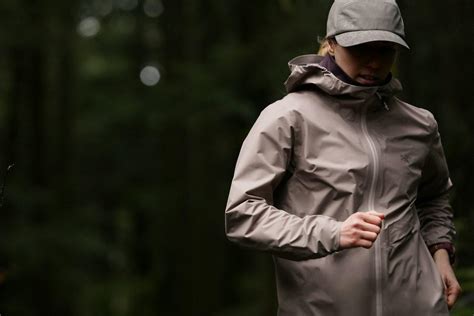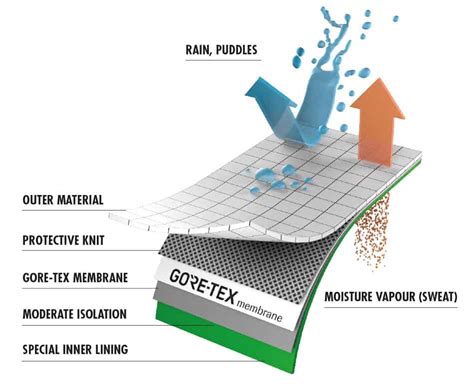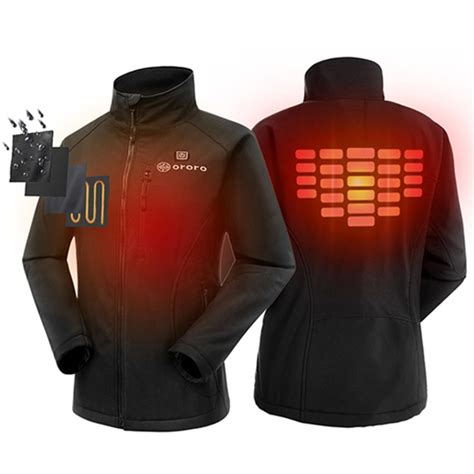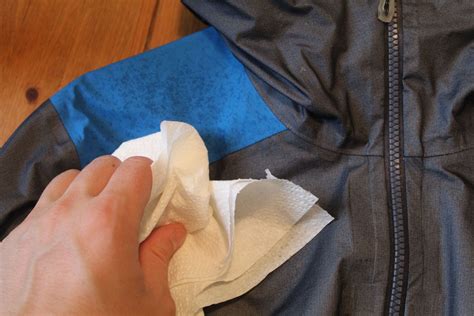A GORE-TEX jacket is a valuable piece of outdoor gear, designed to keep you dry and comfortable in challenging conditions. However, even the best waterproof-breathable fabrics eventually lose their initial water-beading prowess. This isn’t usually due to the GORE-TEX membrane failing, but rather the degradation of the jacket’s DWR (Durable Water Repellent) finish. Restoring this DWR is a straightforward process that can significantly extend the life and performance of your gear.
Understanding DWR and Why it Fails
GORE-TEX technology relies on an extremely thin, microporous membrane that is impermeable to liquid water but allows water vapor to pass through. This is what makes it waterproof and breathable. The DWR finish, on the other hand, is a polymer coating applied to the outer fabric of the jacket. Its job is to make water bead up and roll off the surface, preventing the outer fabric from becoming saturated, a phenomenon known as ‘wetting out’.

Over time, dirt, body oils, sunscreen, insect repellent, and abrasion from backpacks or general wear and tear can contaminate and degrade the DWR. When the DWR is compromised, water will no longer bead; instead, it will spread out and soak into the outer fabric layer. While the GORE-TEX membrane itself will still prevent water from reaching you, the wet outer fabric can feel cold and clammy, reduce breathability, and make your jacket feel heavier.
The Simple Test: Is It Time to Re-Waterproof?
Before you jump into re-waterproofing, it’s good to assess if your jacket truly needs it. A simple test can give you a clear answer:
- Lay your clean, dry jacket on a flat surface.
- Sprinkle a few drops of water onto the outer fabric.
If the water beads up and rolls off, your DWR is still functional. If the water soaks into the fabric, creating dark, wet patches (this is ‘wetting out’), then it’s definitely time to clean and reapply a DWR treatment.

Step 1: Clean Your Jacket Thoroughly
This is arguably the most critical step. Contaminants are the primary cause of DWR failure, and a new DWR treatment won’t adhere or perform well on a dirty surface. Follow these cleaning steps carefully:
- Prepare the Jacket: Zip up all zippers (including pockets), fasten any flaps or straps, and loosen any drawcords. Empty all pockets.
- Choose the Right Detergent: Use a technical fabric wash specifically designed for waterproof-breathable gear (e.g., Nikwax Tech Wash, Grangers Performance Wash). Avoid regular laundry detergents, fabric softeners, bleach, or stain removers, as these can leave residues that inhibit DWR function and can even damage the membrane.
- Machine Wash: Place your jacket in a washing machine. For front-loading machines, add the recommended amount of technical wash to the detergent dispenser. For top-loaders, fill with warm water, add the wash, and then agitate to mix before adding the jacket. Wash on a gentle cycle with warm water (around 105°F/40°C).
- Rinse Thoroughly: It’s crucial to ensure all detergent residue is removed. Run an extra rinse cycle or two to be safe.

Step 2: Choose and Apply Your DWR Treatment
There are two main types of DWR treatments you can use, each with its own application method:
1. Wash-In DWR
Products like Nikwax TX.Direct Wash-In are applied directly in the washing machine. This method is convenient and ensures an even coating across the entire fabric, but it can also treat the inner lining, which might slightly reduce breathability. Only use wash-in treatments for garments that are 100% GORE-TEX or similar waterproof-breathable fabrics.
- After the cleaning cycle, leave the wet jacket in the washing machine.
- Add the recommended amount of wash-in DWR treatment to the detergent dispenser.
- Run another gentle cycle with warm water.
2. Spray-On DWR
Products like Grangers Performance Repel Plus or Nikwax TX.Direct Spray-On are applied to the jacket’s exterior. This method is ideal for jackets with wicking liners, down insulation, or for spot-treating specific areas. It allows for more targeted application, ensuring the inner fabric remains untreated.

- Lay the clean, damp (or dry) jacket on a clean, flat surface. You can also hang it on a hanger.
- Spray the DWR treatment evenly over the entire exterior fabric from about 6-12 inches away, ensuring full coverage. Pay extra attention to high-wear areas like shoulders and elbows.
- Wipe off any excess or drips with a clean, damp cloth immediately to prevent streaking.
Step 3: Activate the DWR Finish
Most modern DWR treatments require heat to properly bond and activate. Check the instructions on your specific DWR product, but generally, there are two common methods:
1. Tumble Dry
This is often the easiest and most effective method. Tumble dry your jacket on a low heat setting (delicate or permanent press) for about 20-30 minutes. The warmth helps the DWR polymers bond to the fabric fibers. Do not use high heat, as it can damage the GORE-TEX membrane.
2. Ironing
If you don’t have a dryer or prefer this method, you can iron your jacket. Place a towel or protective cloth between the iron and the jacket. Use a warm setting (low heat, no steam) and iron gently over the entire exterior surface. Again, avoid excessive heat.

Conclusion
Re-waterproofing your GORE-TEX jacket is a simple yet vital maintenance task that will keep you comfortable and dry on your adventures. By regularly cleaning your gear with appropriate technical washes and reapplying DWR when needed, you’ll ensure your investment performs at its best for years to come. Remember, a well-maintained jacket is a reliable jacket, no matter the weather throws at you.




